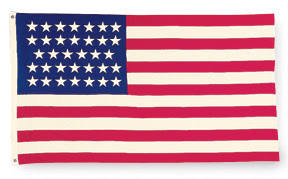"Four score and seven years ago ..."
You know these words, don't you?
You know these words, don't you?
They are the first words in one of the shortest, most famous, and most beloved speeches ever given.
On November 18, 1863, President Lincoln traveled by train to the Gettysburg, Pennsylvania battleground to deliver a speech at the Soldiers National Cemetery to recognize the war dead – from both sides – from the three day battle of Gettysburg.
 |
| Link to Pres. Lincoln's White House bio |
That speech was only 273 words and Lincoln was not even the main speaker that day. The big draw was a famous speaker of the time, Edward Everett, and he spoke to the crowd for two (apparently very long) hours. Lincoln came after that terribly long speech so maybe the crowd that stayed that day also came to hear the President.
The photo below shows Lincoln on the speaker's stand at Gettysburg. It was taken by Mathew [sic] Brady and is in the National Archives. It is considered quite rare and is one of only three known photos from the ceremony in which we think Lincoln can be viewed. This photo actually is a sectional blow up of the speaker's stand. Here are the three photos.
 |
| Rare photo: Lincoln at Gettysburg by Mathew Brady. (Archives.gov) |
There are five, known, hand-written copies of The Gettysburg Address. The Library of Congress' has two. One of these copies is called the Nicolay copy and is considered to be the actual copy of the speech that Lincoln pulled from his pocket and read from.
You can view the Nicolay copy here.
The Gettysburg Address:
Four score and seven years ago our fathers brought forth on this continent, a new nation, conceived in Liberty, and dedicated to the proposition that all men are created equal.
Now we are engaged in a great civil war, testing whether that nation, or any nation so conceived and so dedicated, can long endure. We are met on a great battle-field of that war. We have come to dedicate a portion of that field, as a final resting place for those who here gave their lives that that nation might live. It is altogether fitting and proper that we should do this.
But, in a larger sense, we can not dedicate -- we can not consecrate -- we can not hallow -- this ground. The brave men, living and dead, who struggled here, have consecrated it, far above our poor power to add or detract. The world will little note, nor long remember what we say here, but it can never forget what they did here. It is for us the living, rather, to be dedicated here to the unfinished work which they who fought here have thus far so nobly advanced. It is rather for us to be here dedicated to the great task remaining before us -- that from these honored dead we take increased devotion to that cause for which they gave the last full measure of devotion -- that we here highly resolve that these dead shall not have died in vain -- that this nation, under God, shall have a new birth of freedom -- and that government of the people, by the people, for the people, shall not perish from the earth.
Now we are engaged in a great civil war, testing whether that nation, or any nation so conceived and so dedicated, can long endure. We are met on a great battle-field of that war. We have come to dedicate a portion of that field, as a final resting place for those who here gave their lives that that nation might live. It is altogether fitting and proper that we should do this.
But, in a larger sense, we can not dedicate -- we can not consecrate -- we can not hallow -- this ground. The brave men, living and dead, who struggled here, have consecrated it, far above our poor power to add or detract. The world will little note, nor long remember what we say here, but it can never forget what they did here. It is for us the living, rather, to be dedicated here to the unfinished work which they who fought here have thus far so nobly advanced. It is rather for us to be here dedicated to the great task remaining before us -- that from these honored dead we take increased devotion to that cause for which they gave the last full measure of devotion -- that we here highly resolve that these dead shall not have died in vain -- that this nation, under God, shall have a new birth of freedom -- and that government of the people, by the people, for the people, shall not perish from the earth.
Let it fly!



.png)
